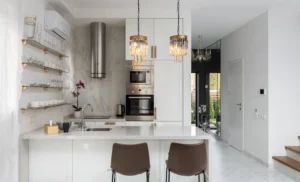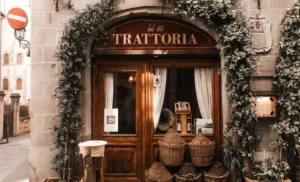Mortise locks are quite popular in the United States They are also common in America and other parts of the world. The only difference is that mortise locks come in different styles, including cylinder keys, lever locks, and even padlocks.
Mortise is a hole that is drilled in the center of the door to accommodate a lock. The locksmith will drill the mortise precisely so that it fits the lock perfectly. A mortise lock is a type of lock that uses a bolt through a hole in the door or other surface to secure it.
It requires both a key and a keyhole, but has an extra feature called “latch bolts” where another bolt prevents the door from being opened unless the correct combination is entered. A mortise is a large hole in the door that projects into the holder of the door knob. A mortise lock is a type of lock that consists of a cylindrical part mounted into the door jamb, with a lever or knob operated by hand.
The mortise lock does not have any visible keyhole, but it uses the same core and pin tumbler mechanisms as modern cylinder locks. A mortise lock is a type of lock that uses a round cylinder to actuate the latch.
The round cylinder is placed inside the door frame and attached to the strike plate, with the latch extending out from the frame into the cylinder.
What is the most secure form of a door lock?
A key-in-knob lock is the most secure form of a door lock, as it uses a key to lock and unlock the door. It works by turning a knob on the other side of the door, which opens the lock when not locked. If a person knows your house and has the appropriate key, they can easily enter without having to do anything at all.
A Yale lock is the most secure locking system. It offers a high level of security by preventing access to the house even if the homeowner knows the combination. It also prevents people from bypassing the deadbolt to use a different lock which is helpful in deterring burglars.
The latch bolt is a special type of key that only fits in that door and prevents easy access to other doors or windows in the house. The most secure form of a door lock is a combination lock. This lock uses a series of numbers to open and close the door, which can be changed on a regular basis.
It is more difficult for an attacker to break into this type of lock because they need to know the combination in order to get inside. In comparison, a keyed lock is easier to break into because keys are just pieces of metal that can be picked up off the ground with ease. The most secure form of a door lock is a deadbolt.
The deadbolt works by using a key to lock the bolt and turn it. A door with a deadbolt is harder to get into than a door without one. There are several types of doors, each requiring different levels of security. The most secure lock is a mortise lock that has a recessed area that is blocked off by a metal plate.
These locks require special keys and can only be opened by people who know how to operate these locks. The most secure lock that a door can have is the one with a deadbolt installed. This type of lock has an actual bolt that needs to be turned in order to get into the door, and it makes it harder for someone to break into your home.
For a more basic and affordable security measure, you can install smart locks that can only be opened by the people who are allowed since they have the key.
How much does it cost to change a lock?
The cost of changing a lock is determined by the type of lock, the number of locks and what kind of service you need. For example, a homeowners’ insurance company might charge more for changing a deadbolt than replacing a single knob. Generally speaking, replacement locks are cheaper than ones that have to be cut or drilled.
It costs $110 to change a lock in most cases. There are some exceptions, but we’ll discuss those later. There are many ways to make your home more secure, but the additional cost of installing locks and gates can be prohibitive.
A professional car locksmith service can help you out by coming to your home or office and helping you with any lock issues that may arise. You also get peace of mind knowing that professionals will always show up when they’re promised, no matter what time of day it is. The cost of changing a lock is often attributed to what the original lock looked like.
If you want to change your locks and not pay the high price, it’s best to change them all at once. Changing one lock will likely be cheaper than if you were to change them over a period of time. A locksmith service usually costs between $50 and $200. However, that doesn’t mean it is a cheap option.
You should consider the amount of time it will take for this individual to change your lock and then weigh the cost with the time you would have to devote in order to get this done. A standard service call to change a lock is $65. However, the price will vary depending on the materials required and how long it will take to change the lock.
For example, if you need a new key made, or your current key cut down, that could increase the price.
What is a standard lock size?
According to the United States Department of Justice, a standard size lock that is commonly used in homes and businesses is 1/2 inch. This is a question that we get quite often at urge Locksmith. We have a page dedicated to answering this specific question and there are other pages in our blog on this topic as well.
The standard lock size is 2 3/8 by 1 3/4 inches. A standard lock size is typically defined as the distance between the center of the keyhole and the edge of the door. Locks vary in size from house to house and on doors from one room to another. A standard lock size is 3/8 inch.
A standard lock is 1 inch wide and 3 inches tall. A lock is a mechanism that provides security and privacy for a building, room, space, or other such real estate. There are three common types of locks: mortise lock, cylinder lock, and warded lock. A standard size mortise lock is 1/2 inch (12 mm) wide by 3-1/2 inches long.
How do you assemble a mortise lock?
The mortise lock is assembled by placing the bolt into a slot in the door jam. The key way is cut into the top of the door, with a rounded projection on one side and an indentation on the other. The milled edge of the key way and a notch at the bottom of it are both drilled out.
A screw is then inserted into the hole at point A, through the backplate and into point B. The threaded screw is then turned clockwise until it reaches point C; this locks the pinion gear firmly in place. The mortise lock is the most common type of door lock. It is a tubular mechanism in which a bolt or a rod extends from one side of the key way to another.
The stem or shaft that holds these parts together only extends into the keyway when the correct key is inserted into the lock. The earliest locks used a pin tumbler mechanism in which each pin was raised and lowered by hand to turn each link in the cylinder.
The pins were later replaced with wafers that moved with respect to each other as they were raised and lowered to engage different combinations of teeth in the plug on their way up and down. A mortise lock is a type of locking mechanism used in doors and window locks.
A mortise lock is similar in appearance to a key-in-knob lock, with several exceptions: the shape of the mechanism’s body, which has an entryway shaped like a recess; the placement of the handle or knob on the outside. The first step in assembling a mortise lock is to measure which key way you will use for each door.
Drill four holes into your frame. These holes should be about 1/4 inch deep and spaced about 3 inches apart from one another. The next step is to screw in four bolts that are long enough to reach through all four holes (usually 1/2 inch). The bolts should now protrude beyond each side of your frame.
The mortise lock is often called the “old-fashioned” lock, with many people still preferring these types of locks because they are less complicated than other types. The first step to assembling a mortise lock is to locate the strike, which is a metal rod that bends into an L shape.
This rod should be placed on the back of the door and against the jamb so that it will act as a guide for the back of the latch or lever. Next, you will need to find a way to hold the latch or lever in place while you drill out this jam. To assemble a mortise lock, you will need to drill a hole in the back of the lock case.
Insert your key and turn clockwise until it clicks into place. Screw the bolt into the threaded shaft, and then turn clockwise one more time to secure it. When assembling a mortise lock, it’s important to align the two parts of the lock. The latch must be pushed into the mortise as shown in the illustration below.
Next, tighten down the set screw and install the lock on the door frame.






